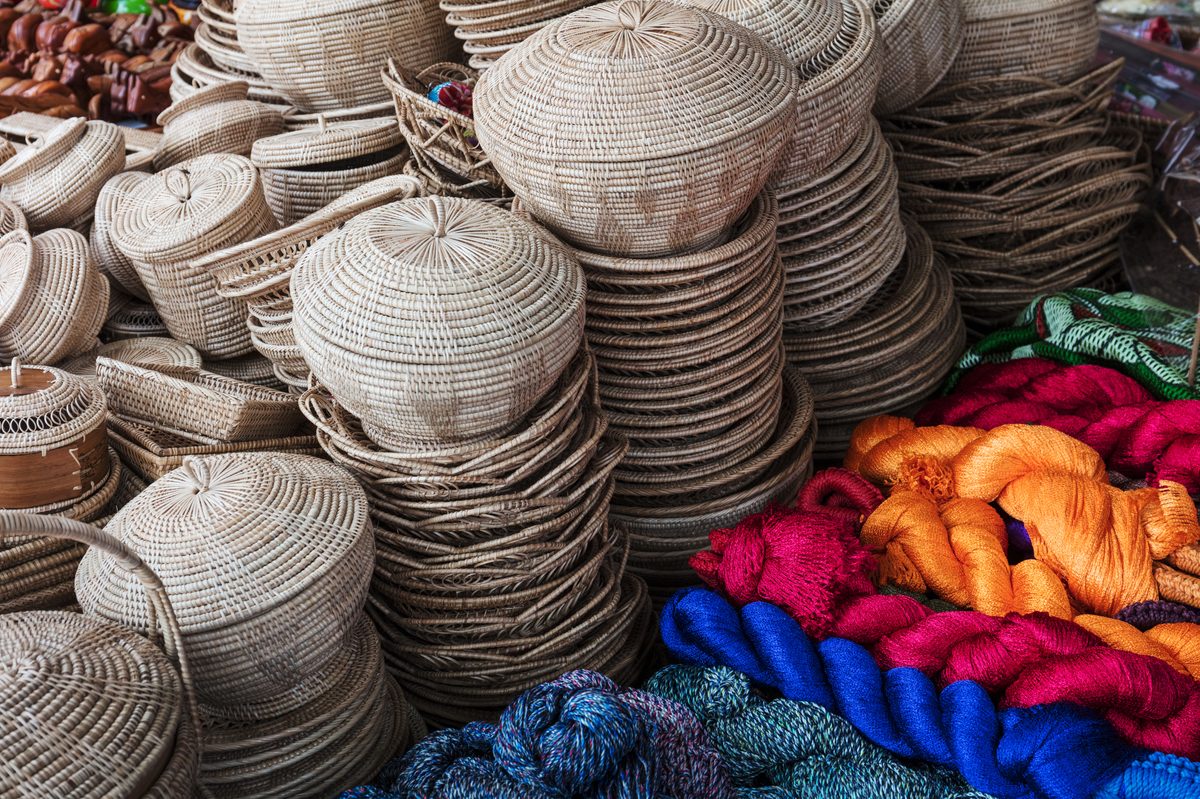Silent Betrayal
This phenomenon, largely hidden from public view, is a stark betrayal of India's deeply rooted values of familial duty and respect for elders.
“Since ancient times, most people in the whole Cheung Kreav commune have been engaged in weaving bamboo handicrafts – never giving up because it’s a tradition from the ancestors as well as a side business which can make some extra income.”

Men and women, young and old, in Kampong Chhnang province’s Cheung Kreav commune are supplementing their farming incomes to support their families while maintaining their identity by weaving traditional handicrafts using skills handed down from their ancestors.
The families reside in nine villages in Rolea Bier district’s Cheung Kreav commune, weaving items such as bamboo baskets the traditional way and displaying them for sale in front of their homes, with others transported by cart to sell in other districts.
Advertisement
Srey Mom, 30, a farmer and bamboo basket weaver residing in Teuk Chenh village, said she knows how to weave a variety of items from bamboo, such as large and small baskets and sieves, even fixing the finishing touches herself.
Advertisement
“Since ancient times, most people in the whole Cheung Kreav commune have been engaged in weaving bamboo handicrafts – never giving up because it’s a tradition from the ancestors as well as a side business which can make some extra income.”
“I learnt how to weave from the elder people in the village – around 70 per cent of them are bamboo weavers,” Srey Mom said.
Pang Sopheap, 48, the president of Cheung Kreav bamboo handicraft association, told The Post that two main types of weaving were done in Cheung Kreav commune, which is made up of nine villages of around 100 families.
“The first type of woven handicrafts are large and small baskets, bamboo bowls and sieves, in a traditional style. The second type involves weaving bamboo handicrafts in modern styles, such as for souvenirs and decorative items.
“Products in the traditional type range from 1,000 riel to more than 100,000 riel, depending on type and size, and this type is produced by many families. I know one village where close to 100 families do this.
“The second type are more ornamental items, such as decorative bowls and lampshades, and many other items for display in resorts and restaurants, for example.
“These kinds of items can be sold from 3,000 riel to 60,000 riel. There are only around 20 families across the commune who weave this type,” Sopheap said.
Im Yoeun, a bamboo basket weaver in Cheung Kreav commune’s Tang Bampong village explained that the woody bamboo stems – called “culms” – used in making the handicrafts can cost 10,000 to 15,000 riel each.
“You cannot survive entirely on this kind of bamboo weaving, but it can help supplement another income. Sometimes we can earn 500,000 or 600,000 riel from wholesale buyers purchasing large amounts.
“On average, only one basket can be made per day, which is sold for 6,000 riel, which at this price makes a profit of only 1,000 to 1,500 riel. This is because the bamboo costs 10,000 to 15,000 riel per culm, and we also need to buy the rattan used to fix the final touches.
Soeung Seang Yong from Tang Bampong village said that, with her children helping and her husband fixing the final touches, she can weave more than 200 bamboo sieves per month. Ten bamboo sieves can be sold wholesale for 70,000 riel.
“Weaving bamboo handicrafts is not very profitable. If the garment factory hadn’t closed and I was still working there, I could earn more than 800,000 riel a month.
“Although I can make nearly two million riel a month from weaving handicrafts, taking out the expenses for the raw materials means working at the working factory was better income,” Seang Yong said.
Sao Sarin, 48, from Toek Chenh village, said she weaves medium-sized bamboo sieves used to dry and steam fish or meat. While she can weave 10 bamboo sieves in a day, she needs other people to fix the final touches, and for one set sold for 80,000 riel, they charge 15,000 riel.
With the small income she can make from her handcrafted bambooseives, she can help support her family, such as buying food, clothes and household items, and for the children to go to school.
Despite an abundance of plastic products, bamboo woven handicrafts are still in high demand from Cambodian people and still serve as functional items.
And the people of Kampong Chhnang province’s Cheung Kreav commune call on all Cambodians to support their bamboo handicrafts to help preserve the traditional skills of the Khmer ancestors to pass down to the next generations.
“I do what I do because the skills have been handed down from our ancestors,” said Seang Yong from Tang Bampong village.
(ANN / The Phnom Penh Post)
Advertisement